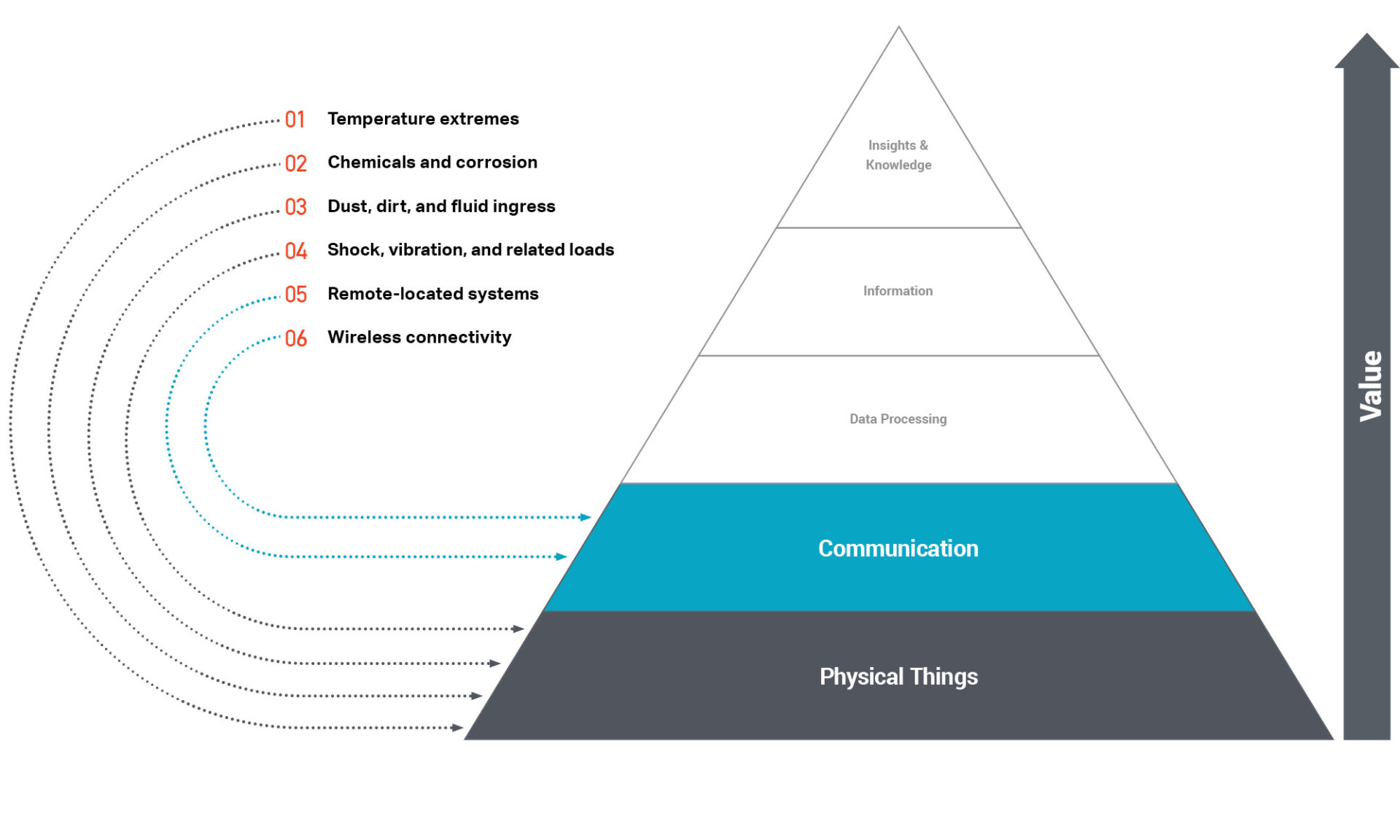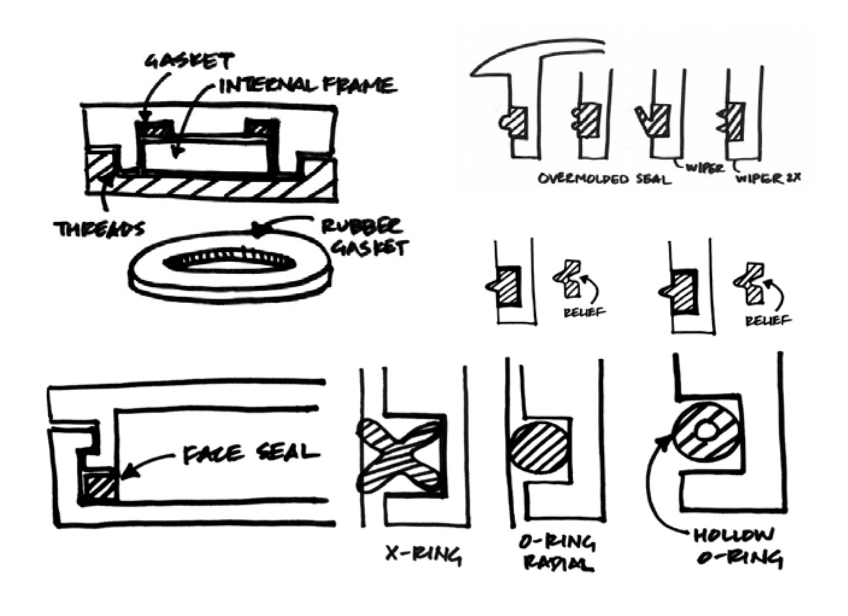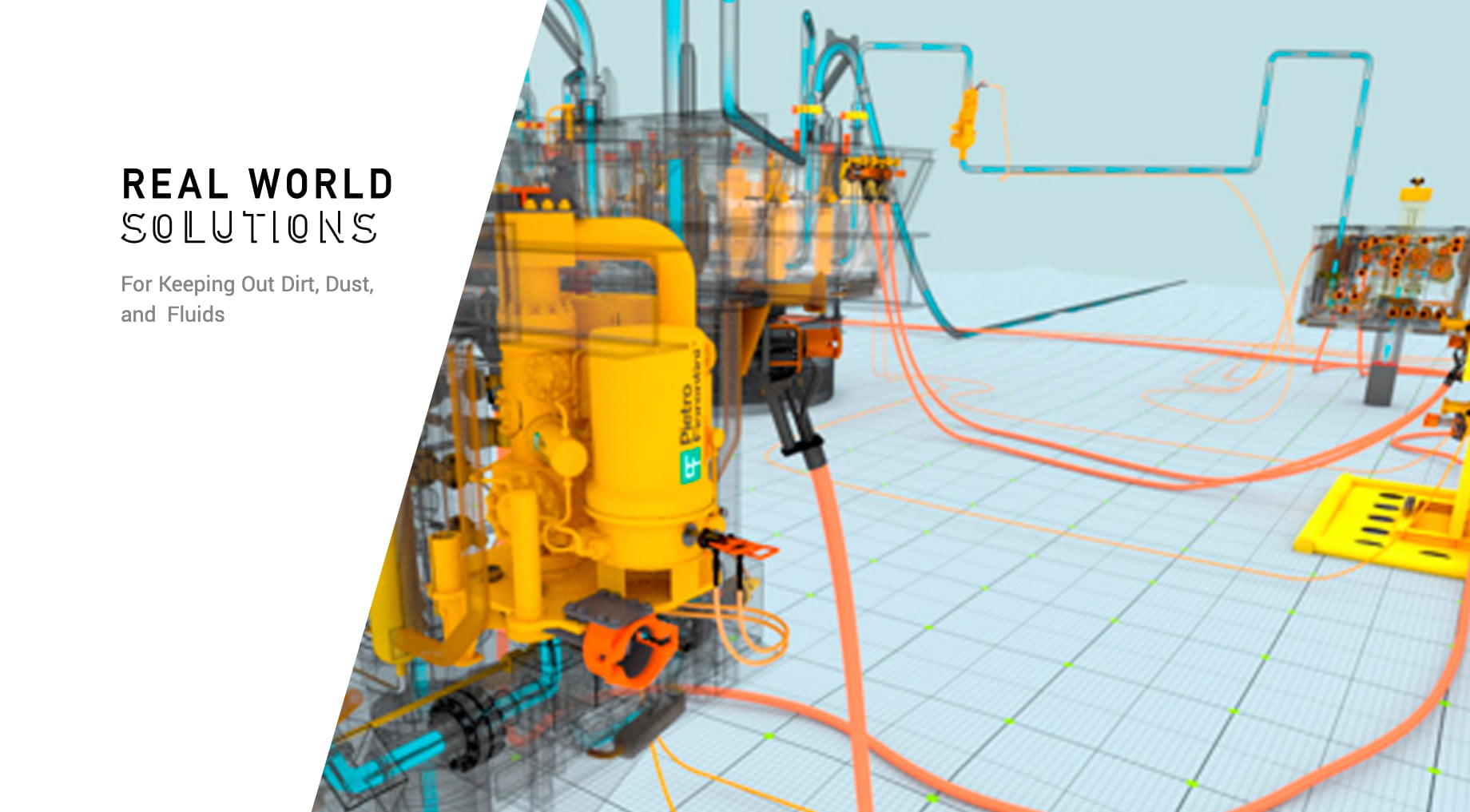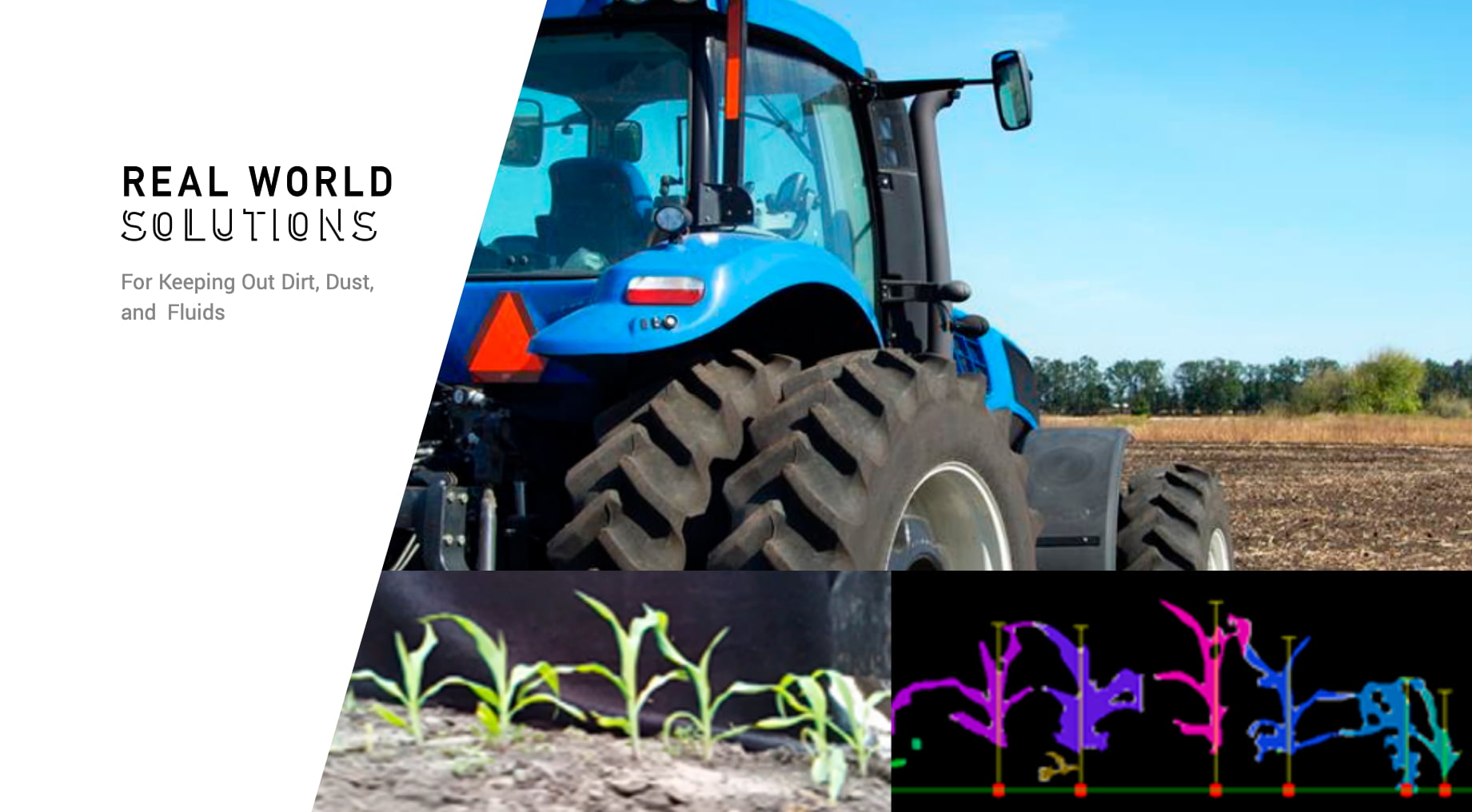Additional contributions to this series made by: Ian Graves, Bret Richmond, & Mike Schaaf

CONDITIONS
In many situations, dust and water ingress are a particularly difficult challenge to overcome.
Sensors still need to be able to measure the environment they are in while protecting sensitive electronics and sensors from the risk of ingress. The requirements must first be defined, having evaluated the environment the system is going to operate in and identifying appropriate standards. This could be from splash-proof for inadvertent exposure to water, through to being resistant to regular pressure washing.
DESIGN FOR INGRESS PROTECTION
Ingress protection design follows a typical iterative design cycle, designing using best practices, prototyping the designs, testing these to their limits, and iterating the design to address any issues identified in testing. Sealing strategies are highly dependent upon the application. This could be anything from ultrasonic welding the enclosure closed to provide a seal, to having dynamic seals that can maintain ingress protection in operation with moving parts. Additionally, proper material selection is vital in any sealing strategy. O-rings, for instance, come in many different materials and can be optimized for a specific chemical, operating temperature range, or diffusion characteristics for gases. Another significant challenge in ingress protection is designing for higher power IoT devices that require substantial cooling. As more highly complex tasks are performed by IoT devices such as machine vision and learning, their power needs increase. Higher power devices using FPGAs or dedicated GPUs would typically be cooled with forced convection via fans blowing air over the high-temperature components.

However, in dusty or wet environments, cooling via direct airflow may be impossible because it requires exposing sensitive internal electronics to harsh ambient conditions. In this scenario, other more complex cooling solutions would be required. Understanding the thermal loads of IoT devices and developing cooling solutions that are suitable for the environmental constraints is critical to designing durable and reliable products.

HIGH-PERFORMANCE, ZERO-MAINTENANCE SUBSEA WATER CUT SENSOR
Pietro Florentini has a successful business designing equipment for the oil and gas industry. Water cut sensors measure the amount of water in the flow from an oil well. Operators rely on this data to optimize the use of inhibitors to remove excess water, saving significant expense in the oil-extraction process. This project focused on developing a self-monitoring, fully redundant system which could detect and work around component failures during its 25 year lifetime. An equipment failure could result in a loss of production worth millions of dollars per day, and replacing a damaged sensor would require chartering a ship and remote-operated subsea vehicle, sailing for 10 days or more to replace a damaged sensor. Not really an option. The resulting sensor and system are extremely reliable, have multiple fail-safes, and a 25 year lifetime.

KEEPING SENSORS CLEAN AND CLEAR ANYWHERE
Let’s take a look at an example of adding machine vision to a commercial conveyor-style pizza oven. If we enclose the camera to protect the lens and electronics from the environment, the transparent cover will likely get covered in grease and grime, while inside the enclosure, condensation may collect and obscure the camera’s view. In either case, pictures taken with the camera are not going to be as clear as they would be with a clean camera enclosure. Similarly, mounting a protected camera on a tractor working in a field will be collecting pictures with dust, dirt and grime collecting on the enclosure over a day’s use.In both scenarios, maintaining proper airflow (to keep condensation at a minimum) and identifying coatings that prevent grime buildup are essential to keeping the cameras collecting clean data. Machine vision systems rely on images captured from cameras, and are often designed to detect or analyze rare occurrences, such as a poor quality pizza topping or a rare weed in the field. While advanced techniques in artificial intelligence can repair corrupted images (click here for additional information and a video explaining how this works), such approaches cannot reproduce events that occur infrequently. A well-built machine vision system can be trained to detect events of interest even if the camera wasn’t cleaned and grease or dust has built up on the lens and the image data is distorted—but not if the data is occluded or otherwise lost. The most effective machine vision systems are trained to handle some level of noise, but also rely on mechanical means to keep the input data relatively clean. Alternatively, a well-designed vision system that can handle noise can also be trained to handle lower-quality images, allowing for the use of a less costly camera, which is especially helpful when operating in an environment that limits a camera’s operational life.

